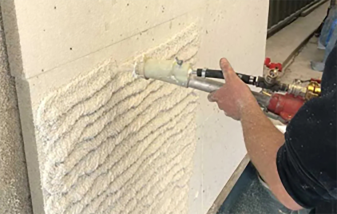
Nov . 15, 2024 20:46 Back to list
hpmc uses
Understanding HPMC Uses and Applications
Hydroxypropyl Methylcellulose (HPMC) is a versatile, non-ionic cellulose ether derived from natural cellulose. It has gained popularity in various industries due to its unique properties such as thickening, emulsifying, and film-forming capabilities. The uses of HPMC are diverse, making it an essential ingredient in many applications.
Pharmaceutical Applications
In the pharmaceutical industry, HPMC is commonly used as a binder and coating agent in tablet formulations. It helps in improving the release profile of active pharmaceutical ingredients (APIs) by controlling the rate at which the drug is released. This controlled release is crucial for ensuring therapeutic efficacy and minimizing side effects. Furthermore, HPMC is used in the preparation of ointments and gels, providing desired viscosity and stability, making it easier to apply topically.
HPMC also plays a significant role in ophthalmic formulations. Due to its excellent moisture retention properties, it is often used in eye drops to provide lubrication and relief for dry eyes. Its safety profile ensures that it is well-tolerated by patients, making it a preferred choice for various ocular applications.
Food Industry
In the food industry, HPMC acts as a thickening agent, stabilizer, and emulsifier. It is commonly used in low-fat and gluten-free food products to improve texture and maintain moisture. For instance, HPMC can mimic the properties of gluten, providing elasticity and structure to gluten-free baked goods. Moreover, it aids in maintaining the shelf life of products by preventing syneresis, which is crucial for items such as sauces and dressings.
hpmc uses

HPMC is also utilized in the production of vegan and vegetarian food products, as it serves as a plant-based alternative to traditional egg and dairy-based thickeners. Its ability to enhance mouthfeel and appearance while remaining calorie-neutral makes it a popular ingredient in modern food formulation.
Construction Industry
In the construction sector, HPMC is frequently used as a modifier in mortars, plasters, and adhesives. It improves workability, bonding strength, and water retention of cement-based materials. This property is critical in ensuring uniform paste formation and allowing for extended open time during application. Additionally, HPMC reduces the risk of cracking and improves flexibility in finished products. Its ability to function effectively in dry mix and ready-to-use formulations is instrumental in the production of tile adhesives that require high performance in various environmental conditions.
Personal Care and Cosmetics
HPMC is a common ingredient in personal care products and cosmetics. It is used as a thickener and stabilizer in lotions, creams, and gels. Its ability to provide a smooth application and enhance the product's overall aesthetics makes it a favorite among formulators in the beauty industry. HPMC also acts as a film former, providing lasting adhesion in cosmetic applications such as foundations and lip products.
Conclusion
The versatility of Hydroxypropyl Methylcellulose makes it a valuable component across numerous industries. From pharmaceuticals to food, construction, and personal care, HPMC offers unique advantages that enhance product performance and user experience. As research and technology evolve, the potential applications of HPMC continue to expand, solidifying its place as an essential ingredient in modern formulations. Whether improving drug formulations, enhancing food texture, or contributing to high-performance construction materials, HPMC’s role is crucial and multifaceted.
-
Versatile Hpmc Uses in Different Industries
NewsJun.19,2025
-
Redispersible Powder's Role in Enhancing Durability of Construction Products
NewsJun.19,2025
-
Hydroxyethyl Cellulose Applications Driving Green Industrial Processes
NewsJun.19,2025
-
Exploring Different Redispersible Polymer Powder
NewsJun.19,2025
-
Choosing the Right Mortar Bonding Agent
NewsJun.19,2025
-
Applications and Significance of China Hpmc in Modern Industries
NewsJun.19,2025







